15 effective strategies to lower blood sugar (no drugs required)
Controlling blood sugar within the normal range (3.9 to 7.9mmol/l) is the core of the treatment of diabetes and blood sugar control. The most direct way to lower blood sugar is to take hypoglycemic drugs or inject insulin. However, in addition to these, many effective strategies do not require drugs to lower blood sugar.
1.Reduce carbohydrate intake
 CARBOHYDRATE
CARBOHYDRATE
Carbohydrates in food will be broken down into sugars after being digested. With the participation of insulin, these sugars will enter the cells and be converted into energy for the human body to use. However, diabetic patients do not have enough insulin or even insulin, so these sugars will stay in the blood and cause blood sugar to rise. If we eat high-carbohydrate foods at every meal, our blood sugar will soar. However, low-carbohydrate foods will delay the rise in blood sugar and reduce blood sugar fluctuations. The American Diabetes Association recommends that women eat 45 grams of carbohydrates per meal and men eat 60 grams of carbohydrates per meal. Of course, this recommended value can be adjusted according to individual differences. I usually eat 30 grams to 45 grams of carbohydrates.
2.Add healthy fats to food

I have met many friends who dare not eat during pregnancy because of high blood sugar. I have also seen many sugar friends choose to go hungry to control their blood sugar. In fact, neither of these two methods is recommended. Because people can't be hungry for a long time. If you just blindly do not eat, it will cause liver glycogen to decompose, and blood sugar will rise instead. If you want to reduce carbohydrates without being hungry, what should we do? We can choose healthy fats that provide Omega 3 fatty acids. They not only make us feel full for a long time but also improve heart health. They form a stable, slow-burning fuel source to replace sugar in the body. For example, ghee, coconut oil, avocado, nuts, olive oil, and oily fish, etc.
3.Choose foods rich in dietary fiber
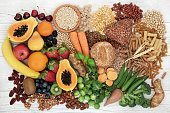
Dietary fiber is a carbohydrate that will not be completely broken down. It can slow down the digestion process and prevent blood sugar from rising rapidly. Studies have shown that certain types of fiber can actually increase insulin sensitivity and lower blood sugar levels. Also, dietary fiber can make us feel full, can control weight, lower blood pressure, relieve constipation... Fruits, vegetables, beans, etc. are rich in dietary fiber. For details, see " "Eat more whole grains and whole grains". Has your blood sugar been fooled? ".
4.Choose foods with the low glycemic index

Glycemic index refers to the relative speed at which blood sugar rises within two hours of food entering the body. Foods with a low glycemic index rise slowly, and foods with a high glycemic index rise quickly. Glycemic index less than 55 is a low glycemic index food. They stay in the gastrointestinal for a long time, have a low absorption rate, slow conversion into glucose, slow blood sugar rise, and low peak value; while high glycemic index foods are just the opposite. Relevant studies have shown that eating foods with a low glycemic index has been proven to reduce long-term blood sugar levels in patients with type 1 and type 2 diabetes. Foods with a low glycemic index mainly include seafood, meat, eggs, oats, barley, beans, lentils, sweet potatoes, corn, quinoa, most fruits, and non-starchy vegetables.
5.Choose foods rich in resistant starch
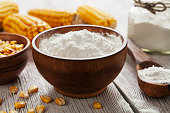
Resistant starch, also known as anti-enzymatic starch or indigestible starch, cannot be enzymatically hydrolyzed in the small intestine but can react with volatile fatty acids in the human gastrointestinal tract and colon. Resistant starch can help diabetic patients better control blood sugar levels. Compared with "regular" carbohydrate foods, eating resistant starch-rich foods will have a slower rise in blood sugar and a lower peak blood sugar. Resistant starch can improve insulin sensitivity, and it can also help people who are at risk of diabetes or pre-diabetes. Beans, whole wheat, green bananas, potatoes, yams, corn, and other foods are rich in resistant starch. Also, cooling certain starchy foods such as potatoes and pasta after cooking will also increase their resistant starch content. This is one of the reasons why some cold foods increase sugar slowly.
6.Try to avoid eating large meals

Eating large meals will bring a burden to diabetic patients, and overeating will cause further harm to diabetic patients. An easy way to naturally lower blood sugar levels is to eat less. But this is not asking us to endure hunger. In fact, when we choose the right grains, proteins, and fats, we will naturally eat in moderation and will not feel hungry. We must chew slowly when we eat so that our brains have a chance to tell us that we are full. Eating 8 points full when eating is very beneficial to our blood sugar control and our health.
7.Must have breakfast

We all understand that breakfast is the maximum essential meal of the day. This is especially true for people with diabetes. After fasting for 8-12 hours, the body needs food to balance blood sugar levels the night before and to inject insulin. Studies have proven that a high-protein breakfast can assist ladies to hold higher blood sugar control. Some researchers even determined that the nice breakfast carries 39 grams of protein, on the way to motive the height glucose after a meal to be decrease than a meal with low protein content. Also, ingesting breakfast can assist obese kind 2 diabetic sufferers lose weight.
8.Drink plenty of water

Drinking enough water can help us keep blood sugar levels within a normal range. Not only can it prevent dehydration, but it can also help the kidneys excrete excess blood sugar through urine.
9.Exercise regularly

Regular exercise can increase insulin sensitivity. During exercise, muscle cells start to consume glucose and convert it into energy required by the body, thereby reducing blood sugar. In addition to finding time to exercise, we can also integrate exercise into our daily life. For example, park your car far away from your home or work, get off the bus one stop before going to work, walk after dinner, climb more stairs and take fewer elevators, and so on.
10.Make sure you have enough sleep

Can sleep also lower blood sugar? Yes, you read it right. Good sleep can increase insulin sensitivity, help control blood sugar and promote a healthy weight. Poor sleep can destroy important metabolic hormones, prolong the release time of growth hormone and increase cortisol levels, all of which have an important effect on blood sugar. Lack of sleep can easily cause blood sugar disorders, and even normal people can increase the risk of diabetes. We try to ensure that we have at least 7 hours of uninterrupted sleep every night.
11.Maintain a healthy weight
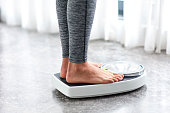
Maintaining a healthy weight helps control blood sugar and reduces the chance of diabetes. Studies have shown that losing weight even as little as 7% can reduce the risk of diabetes by 58%. This is especially true for obese diabetic patients and pre-diabetes. Weight loss can increase insulin sensitivity, reduce glycosylated hemoglobin and improve cardiovascular health.
12.Stress

Stress has a big impact on blood sugar levels. When the body is under tension, the body releases stress hormones, which increase blood sugar levels. A study showed that exercise, relaxation, and meditation can significantly reduce students' stress and lower blood sugar levels. We can reduce the stress in life through the following ways: Tai Chi, yoga, meditation, deep breathing, taking a hot bath, watching a movie, learning a craft, starting a hobby, learning to be grateful, and so on.
13.Try intermittent fasting
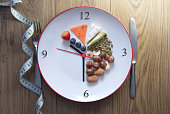
Intermittent fasting is a simple strategy: eat within the 12-hour window and fast for the remaining 12 hours. For example, the handiest eat among eight am and eight pm. This effectively mimics the eating habits of our ancestors. It can be a good preference for human beings with kind 2 diabetes. Many studies have shown that intermittent fasting can help reduce insulin resistance and improve insulin sensitivity, thereby lowering blood sugar levels. However, this method is not recommended for pregnant women and people with type 1 diabetes, because pregnant women need carbohydrates to provide fetal nutrition, and type 1 diabetes may cause diabetic ketosis.
14.Measure blood sugar frequently
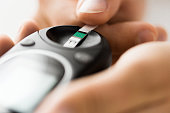
Monitoring blood sugar can help us control blood sugar. Recording blood sugar levels can help us determine whether we need to adjust our diet and medications, and it can also help us understand how our body responds to specific foods. Many patients with type 2 diabetes have a misunderstanding: they think that as long as they take the medicine prescribed by the doctor, the blood sugar is normal when the test is taken, and there is no problem with blood sugar. In fact, this is not the case. The blood sugar level changes every minute. Therefore, we can only grasp the law and better control the blood by measuring the blood sugar frequently.
15.Quit smoking

Smoking is harmful to your health. As a diabetic, smoking is even more dangerous. The nicotine in cigarettes can promote insulin resistance. It not only makes blood sugar control more difficult but also increases the risk of heart disease and kidney problems.
According to the latest data, the prevalence of diabetes among adults aged 18 and over in China has reached 11.6%, and the prevalence of pre-diabetes has reached an astonishing 50.1%. According to this ratio, the number of diabetic patients in my country has reached 114 million, and the number of pre-diabetics is close to 500 million. Regardless of whether it is diabetes or pre-diabetes, care must be taken to control blood sugar. It should be noted that drugs or insulin are necessary components to control blood sugar, but only relying on drugs or insulin will not achieve very ideal results. Only when diet and lifestyle are complementary to other treatment options can our sugar control effect be optimized and the quality of life improved.


You must be logged in to post a comment.